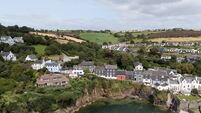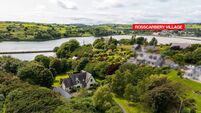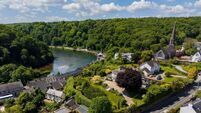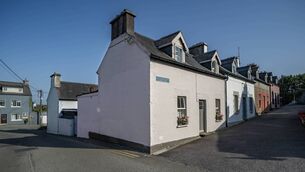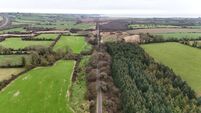Mill wheels turn again
In past decades, gentle decline and eventual demolition was the inevitable fate of the county's old, stone-built industrial legacy.
Now, though, a booming economy, a brave cohort of developers or individual restorers, new skills allied to an appreciation of old ways and materials has seen buildings brought back from the brink of ruin. Rineen Mills' time has now come, in the slow turn of history's wheels.
Said to have had the country's second largest mill wheel ever (removed in 1924), the coastal corn mill received corn from Cork, England and the UK, feeding the West Cork populace over centuries, while in 1855 a herd of whales ended up adrift, beached and butchered for their oil by Rineen.
A happier mammalian period was the recent successes of the horse Supreme Rock, born at Rineen, who won Olympic and World Championship medals in eventing, as well as badminton horse trials for its owner and trainer Lindy Good.
Set by a wooded tidal sweep in West Cork, the 17th century complex Rineen Mill is up for sale with a €1 million plus guide, offering in return a mill building of 26,000 sq ft, five other buildings, and 3.5 acres of mature, moody grounds, close to Casteltownshend, Glandore, Union Hall and Skibbereen, about an hour from Cork city and airport.
West Cork already has several success stories to encourage bidders to make a move on Rineen: cases include Palace Anne Mills in Enniskeane, a roadside mill building eing converted to apartments and where a single penthouse three-bed 2,500 sq ft apartment sold last year.
In Clonakilty town centre, a former grain store is being converted to apartments for the elderly, other small mill buildings have gone to single private residential usage and castles like Jeremy Irons' one near Ballydehob, Innishannon castle and now Castlefreke have also undergone restorative works.
Estate agent Michael Daniels is handling the sale of the Rineen mills complex, offered by tender in early April a sales method designed to harden interest as private approaches were made to the owners in the last year or two at or around the €1 million mark. It is steeped in local commercial history and has been owned since 1899 by the Good family who now are selling up.
It dates to 1679, and the beguiling property mix and development challenge includes a granary annexe, miller's house, victorian lodge, carriage house, cottage, gate lodge, stables, paddock modern warehouse and water frontage to Castlehaven harbour's inner reaches, including a service jetty.






